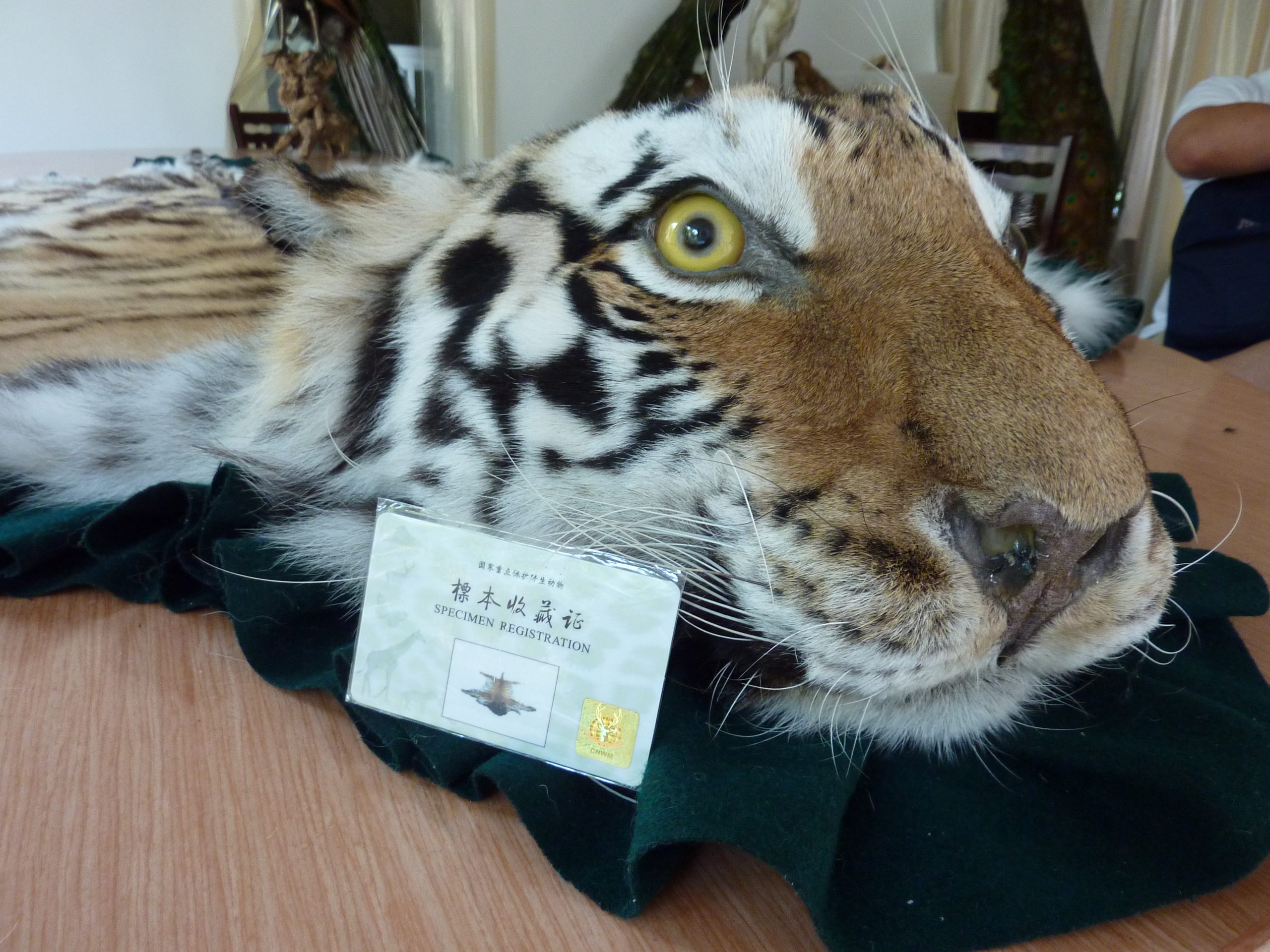Imagine walking into your local supermarket and seeing liquor made from tiger bones and deer antlers, frozen crocodile meat, powdered bear bile, medicine made from musk deer, tins of spotted deer meat and giant salamander – all protected species, all priced up and sitting on the shelves beside your daily necessities.
China’s Wildlife Protection Law is undergoing its first major revision in 26 years since it came into force. The draft, currently under public consultation, states for the first time that wildlife can be used in the manufacture of Chinese medicine, healthcare products and food for profit. If this draft becomes law then these scenes could become a reality.
Is this what an ‘ecologically civilised’ society looks like?
The revision of the Wildlife Protection Law is part of a broader overhaul of China’s environmental laws, which have been brought into line with the concept of ‘Ecological Civilisation’ (a government term recognising the need for a greener approach). But some of the content in a proposed draft of the new law runs contrary to these efforts.
The overarching guidelines for ‘achieving Ecological Civilisation’ issued by the State Council and the Communist Party of China’s Central Committee, calls for the protection of rare and wild fauna and flora. They require existing laws to “guide, standardise and limit the exploitation, use and protection of natural resources”.
Finally, the guidelines undertake to “promote a faster public shift to thrifty, green and low-carbon, civilised and healthy choices in clothing, food, homes, transportation and travel; and firmly oppose all types of luxury and excessive consumption.”
The eating of rare and endangered wildlife is reported to be a criminal act by legal interpretations. It is also questionable whether the use of endangered wildlife in medicine and healthcare products can be considered as “civilised and healthy”.
In its current draft, the new law (the only one in China to specify the protection of wildlife in its title) allows provincial authorities to approve the hunting of wildlife under special state protection for, “captive breeding and other special purposes”. The draft also approves the trade and use of wild species for “public display (performance)”.
The wildlife under special state protection is classified as species that are rare, endangered and/ or important for maintaining ecological balance.The draft does not specify the aim or nature of captive breeding for “public display”. Hence approval could be given to commercial breeding programmes or circuses that buy, sell and use nationally protected wildlife.
Captive breeding is a rapidly growing industry that often undermines conservation efforts. In February 2015, a Public Security Bureau head in Shenzhen held a banquet at which a giant salamander was served. The salamander in question had been farmed by an industry that is putting the future of this critically endangered species at risk. A recent study showed that the Chinese giant salamander has lost 80% of its wild population, partly because of illegal poaching to supplement farmed populations, which often do not breed successfully.
It is a similar story for other heavily bred species in China, such as tigers, bears and spotted dears, various reptile species and tortoises.
Furthermore, wildlife products are often considered expensive luxury items, which are used as bribes when building ‘connections’. A trade in such products is therefore entirely out of line with the spirit of the national crackdown on corruption.
Market forces
The shop shelf described in the introduction is not a figment of imagination. Most of the products described are already permitted for trade under certain administrative regulations, although remain in a legal “grey zone”.
Open source information showed that since 2003, government authorities have made over a dozen announcements of companies and products granted ‘China wildlife utilisation management special marking’. The special mark permits trade in all sorts of rare and endangered wildlife products, such as ivory – although China recently promised to halt this as the country responds to growing international criticism.
For example, an accouncement made in 2007 included almost one hundred products from more than 80 firms, including, “medicine containing saiga antelope antlers, pangolin scales, parts of rare snakes, musical instruments, leather goods, clothing, healthcare products, cosmetics made from rare snakes, tiger and leopard skins and skin products, stuffed wild animals, frozen and dried Siamese crocodile meat, and liquors made from spotted deer velvets and blood.”
One lawyer with an interest in animal protection law said that the misuse of wildlife stems from legal loopholes. For example, the State Forestry Administration (an implementation authority) uses vague language in the existing law, which allows serious breaches to continue under the protection of its own departmental regulations.
The new revision retains some of that opaque language, such as “other special purposes.” It also intends to make the above mentioned marking system into law and, for the first time, to create a list of protected wildlife to be bred for trade.
In 2013, during a consultation on regulations for the breeding of wildlife under special state protection, there was widespread opposition to the commercial exploitation of rare species. The regulations were shelved but similar rules are now appearing in the draft of the Wildlife Protection Law – a backwards step.
Take the tiger, for example, one of China’s most endangered species. Only 50 are left in the wild in China but over 5,000 are kept in captivity. These tigers are mostly bred for profit with no conservation value.
Though a UN convention called for the phasing out of commercial tiger breeding, the authorities in China turned a blind eye to the proliferation of tiger farms across the country and allowed the trade in captive bred tigers – liquor products made by two of the biggest tiger farms were given permission by the State Forestry Administration for trade.
The trade has got out of control as recent headlines suggest. In 2014, tiger meat was served at a banquet in Leizhou, and last year a tiger corpse was found in the street in Wenzhou. Tigers have been mistreated and abused in zoos across the country, while circus tigers have mysteriously showed up in private possession. These are all tigers farmed for profit.
A recent report said that the last four decades have seen populations of terrestrial vertebrates in China drop by half, resulting in a huge loss in biodiversity. The revision of the Wildlife Protection Law offers the chance to reverse the loss. The first step would be to halt the commercial breeding of rare and endangered species and remove all clauses allowing their commercial use.
Click here to read the draft Wildlife Protection Law of China and submit your comments before January 29, 2016








